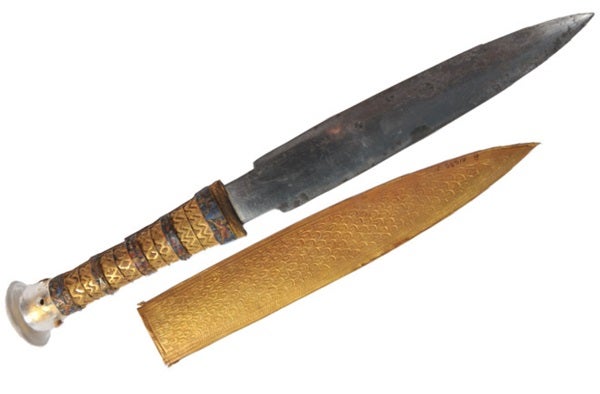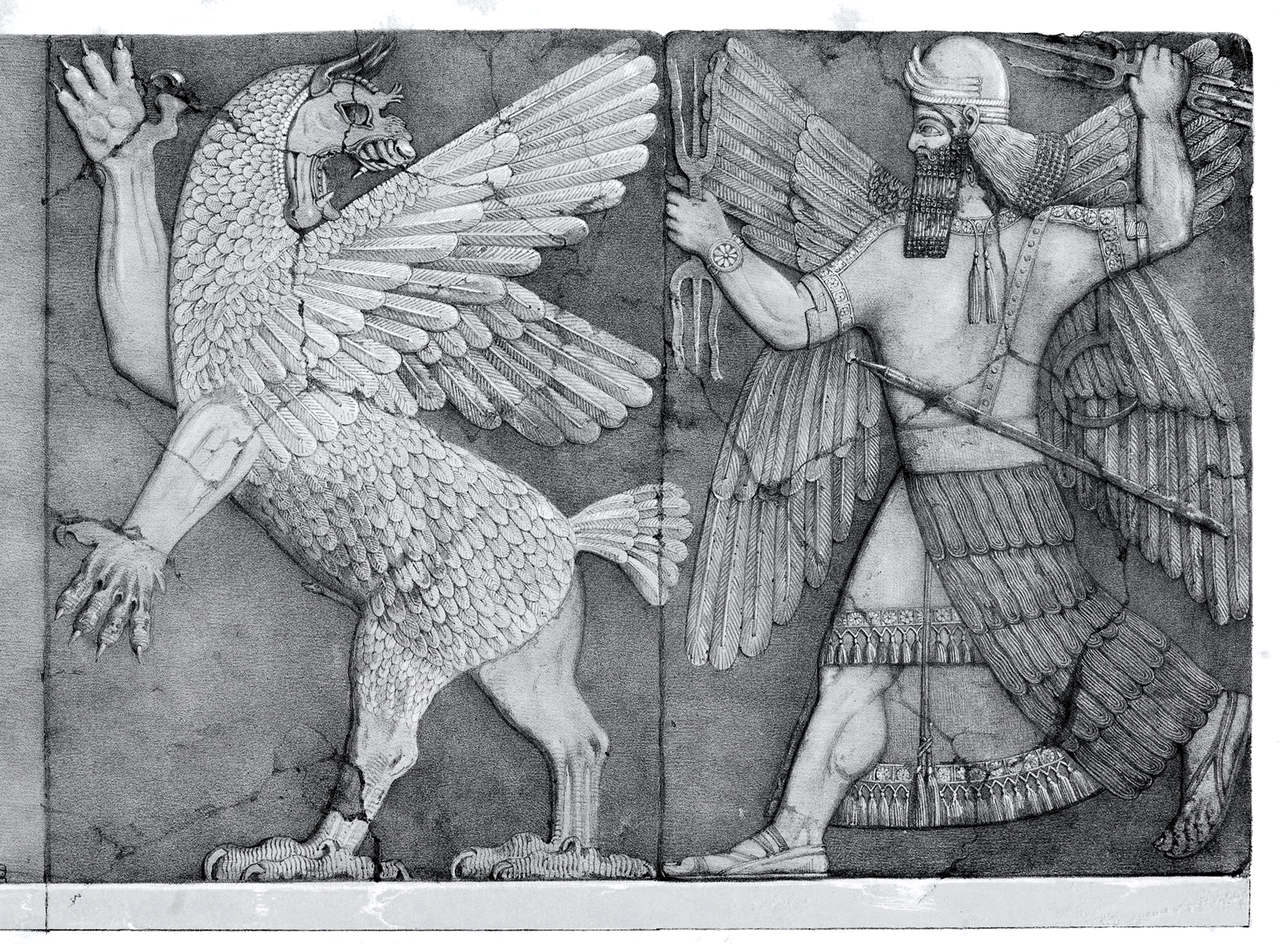3
« Last post by Yeshu on Today at 08:57:41 AM »
Unto Rama Hvastra, unto Vayu who works highly and is more powerful to afflict than all other creatures,
Be propitiation from me, for sacrifice, prayer, propitiation and glorification.
Yatha ahu vairyo: The will of the Lord is the law of holiness....
I
1.
I will sacrifice to the Waters and to Him who divides them. I will sacrifice to Peace, whose breath is friendly, and to Weal, both of them.
To this Vayu do we sacrifice, this Vayu do we invoke, for this house, for the master of this house, and for the man here who is offering libations and giving gifts. To this excellent God do we sacrifice, that he may accept our meat and our prayers, and grant us in return to crush our enemies at one stroke.
2.
To him did the Maker, Ahura Mazda, offer up a sacrifice in the Airyana Vaejah, on a golden throne, under golden beams and a golden canopy, with bundles of baresma and offerings of full-boiling [milk].
3.
He begged of him a boon, saying: 'Grant me this, O Vayu! who dost work highly, that I may smite the creation of Angra Mainyu, and that nobody may smite this creation of the Good Spirit!'
4.
Vayu, who works highly, granted him that boon, as the Maker, Ahura Mazda, did pursue it.
5.
We sacrifice to the holy Vayu: we sacrifice to Vayu, who works highly.
To this part of thee do we sacrifice, O Vayu! that belongs to Spenta Mainyu.
For his brightness and glory, I will offer unto him a sacrifice worth being heard, namely, unto the awful Vayu, who works highly. We offer up a sacrifice unto the awful Vayu, who works highly, with the libations, with the Haoma and meat, with the baresma, with the wisdom of the tongue, with the holy spells, the words, the deeds, the libations, and the well-spoken words.
Yenhe hatam: All those beings of whom Ahura Mazda....
II
6.
I will sacrifice to the Waters and to Him who divides them....
To this Vayu do we sacrifice, this Vayu do we invoke....
7.
To him did Haoshyangha, the Paradhata, offer up a sacrifice on the Taera of the Hara, bound with iron, on a goIden throne, under golden beams and a golden canopy, with bundles of baresma and offerings of full-boiling [milk].
8.
He begged of him a boon, saying: 'Grant me, O Vayu! who dost work highly, that I may smite two-thirds of the Daevas of Mazana and of the fiends of Varena.'
9.
Vayu, who works highly, granted him that boon, as the Maker, Ahura Mazda, did pursue it.
We sacrifice to the holy Vayu....
For his brightness and glory, I will offer unto him a sacrifice worth being heard....
III
10.
I will sacrifice to the Waters and to Him who divides them....
To this Vayu do we sacrifice, this Vayu do we invoke....
11.
To him did Takhma Urupa, the well-armed, offer up a sacrifice on a golden throne, under golden beams and a golden canopy, with bundles of baresma and offerings of full-boiling [milk].
12.
He begged of him a boon, saying: 'Grant me this, O Vayu! who dost work highly, that I may conquer all Daevas and men, all the Yatus and Pairikas, and that I may ride Angra Mainyu, turned into the shape of a horse, all around the earth from one end to the other, for thirty years.'
13.
Vayu, who works highly, granted him that boon, as the Maker, Ahura Mazda, did pursue it.
'We sacrifice to the holy Vayu....
For his brightness and glory, I will offer unto him a sacrifice worth being heard....
IV
14.
I will sacrifice to the Waters and to Him who divides them.....
To this Vayu do we sacrifice, this Vayu do we invoke....
15.
Unto him did the bright Yima, the good shepherd, sacrifice from the height Hukairya, the all-shining and golden, on a golden throne, under golden beams and a golden canopy, with bundles of baresma and offerings of full-boiling [milk].
16.
He begged of him a boon, saying: 'Grant me this, O Vayu! who dost work highly, that I may become the most glorious of the men born to behold the sun: that I may make in my reign both animals and men undying, waters and plants undrying, and the food for eating creatures never-failing.'
In the reign of the valiant Yima there was neither cold wind nor hot wind, neither old age nor death, nor envy made by the Daevas.
17.
Vayu, who works highly, granted him that boon, as the Maker, Ahura Mazda, did pursue it.
We sacrifice to the holy Vayu....
For his brightness and glory, I will offer unto him a sacrifice worth being heard....
V
18.
I will sacrifice to the Waters and to Him who divides them....
To this Vayu do we sacrifice, this Vayu do we invoke....
19.
Unto him did the three-mouthed Azhi Dahaka offer up a sacrifice in his accursed palace of Kvirinta, on a golden throne, under golden beams and a golden canopy, with bundles of baresma and offerings of full-boiling [milk].
20.
He begged of him a boon, saying: 'Grant me this, O Vayu! who dost work highly, that I may make all the seven Karshvares of the earth empty of men.'
21.
In vain did he sacrifice, in vain did he beg, in vain did he invoke, in vain did he give gifts, in vain did he bring libations; Vayu did not grant him that boon.
For his brightness and glory, I will offer unto him a sacrifice worth being heard....
VI
22.
I will sacrifice to the Waters and to Him who divides them....
To this Vayu do we sacrifice, this Vayu do we invoke....
23.
Unto him did Thraetaona, the heir of the valiant Athwya clan, offer up a sacrifice in the four-cornered Varena, on a golden throne, under golden beams and a golden canopy, with bundles of baresma and offerings of full-boiling [milk].
24.
He begged of him a boon, saying: 'Grant me this, O Vayu! who dost work highly, that I may overcome Azhi Dahaka, the three-mouthed, the three-headed, the six-eyed, who has a thousand senses, that most powerful, fiendish Druj, that demon baleful to the world, the strongest Druj that Angra Mainyu created against the material world, to destroy the world of the good principle; and that I may deliver his two wives, Savanghavach and Erena-vach, who are the fairest of body amongst women, and the most wonderful creatures in the world.'
25.
Vayu, who works highly, granted him that boon, as the Maker, Ahura Mazda, did pursue it.
We sacrifice to the holy Vayu....
For his brightness and glory I will offer unto him a sacrifice worth being heard....
VII
26.
I will sacrifice to the Waters and to Him who divides them....
To this Vayu do we sacrifice, this Vayu do we invoke....
27.
To him did the manly-hearted Keresaspa offer up a sacrifice by the Gudha, a channel of the Rangha, made by Mazda, upon a golden throne, under golden beams and a golden canopy, with bundles of baresma and offerings of full-boiling [milk].
28.
He begged of him a boon, saying: 'Grant me this, O Vayu! who dost work highly, that I may succeed in avenging my brother Urvakhshaya, that I may smite Hitaspa and yoke him to my chariot.'
The Gandarewa, who lives beneath the waters, is the son of Ahura in the deep, he is the only master of the deep.
29.
Vayu, who works highly, granted him that boon, as the Maker, Ahura Mazda, did pursue it.
We sacrifice to the holy Vayu....
For his brightness and glory, I will offer unto him a sacrifice worth being heard....
VIII
30.
I will sacrifice to the Waters and to Him who divides them....
To this Vayu do we sacrifice, this Vayu do we invoke....
31.
To him did Aurvasara, the lord of the country, offer up a sacrifice, towards the White Forest, by the White Forest, on the border of the White Forest, on a golden throne, under golden beams and a golden canopy, with bundles of baresma and offerings of full-boiling [milk].
32.
He begged of him a boon, saying: 'Grant me this, O Vayu! who dost work highly, that the gallant Husravah, he who unites the Aryan nations into one kingdom, may not smite us; that I may flee from king Husravah;....
'That king Husravah and all the Aryans in the forest may smite him.'
33.
Vayu, who works highly, granted him that boon, as the Maker, Ahura Mazda, did pursue it.
We sacrifice to the holy Vayu....
For his brightness and glory, I will offer unto him a sacrifice
Worth being heard....
IX
34.
I will sacrifice to the Waters and to Him who divides them....
To this Vayu do we sacrifice, this Vayu do we invoke....
35.
To him did Hutaosa, she of the many brothers, of the Naotara house, offer up a sacrifice, on a golden throne, under golden beams and a golden canopy, with bundles of baresma and offerings of boiling milk.
36.
She begged of him a boon, saying: 'Grant me this, O Vayu! who dost work highly, that I may be dear and loved and well-received in the house of King Vishtaspa.'
37.
Vayu, who works highly, granted her that boon, as the Maker, Ahura Mazda, did pursue it.
We sacrifice to the holy Vayu....
For his brightness and glory, I will offer unto him a sacrifice worth being heard....
38.
I will sacrifice to the Waters and to Him who divides them....
To this Vayu do we sacrifice, this Vayu do we invoke....
39.
To him did the maids, whom no man had known, offer up a sacrifice on a golden throne, under golden beams and a golden canopy, with bundles of baresma and offerings of boiling milk.
40.
They begged of him a boon, saying: 'Grant us this, O Vayu! who dost work highly, that we may find a husband, young and beautifuI of body, who will treat us well, all life long, and give us offspring; a wise, learned, ready-tongued husband.'
41.
Vayu, who works highly, granted them that boon, as the Maker, Ahura Mazda, did pursue it.
We sacrifice to the holy Vayu....
For his brightness and glory, I will offer unto him a sacrifice worth being heard....
42.
I will sacrifice to the Waters and to Him who divides them....
To this Vayu do we sacrifice, this Vayu do we invoke....
We sacrifice to that Vayu that belongs to the Good Spirit, the bright and glorious Vayu.
43.
My name is Vayu, O holy Zarathushtra! My name is Vayu, because I go through (vyemi) the two worlds, the one which the Good Spirit has made and the one which the Evil Spirit has made.
My name is the Overtaker (apaeta), O holy Zarathushtra! My name is the Overtaker, because I can overtake the creatures of both worlds, the one that the Good Spirit has made and the one that the Evil Spirit has made.
44.
My name is the All-smiting, O holy Zarathushtra! My name is the All-smiting, because I can smite the creatures of both worlds, the one that the Good Spirit has made and the one that the Evil Spirit has made.
My name is the Worker of Good, O holy Zarathushtra! My name is the Worker of Good, because I work the good of the Maker, Ahura Mazda and of the Amesha-Spentas.
45.
My name is He that goes forwards.
My name is He that goes backwards.
My name is He that bends backwards.
My name is He that hurls away.
My name is He that hurls down.
My name is He that destroys.
My name is He that takes away.
My name is He that finds out.
My name is He that finds out the Glory (Hvareno).
46.
My name is the Valiant; my name is the Most Valiant.
My name is the Strong; my name is the Strongest.
My name is the Firm; my name is the Firmest.
My name is the Stout; my name is the Stoutest.
My name is He that crosses over easily.
My name is He that goes along hurling away.
My name is He that crushes at one stroke.
My name is (?Ainiva).
My name is He that works against the Daevas.
My name is (?Keredharisha).
47.
My name is He that prevails over malice; my name is He that destroys malice.
My name is He that unites; my name is He that reunites; my name is He that separates.
My name is the Burning; my name is the Quick of intelligence,
My name is Deliverance; my name is Welfare.
My name is the Burrow; my name is He who destroys the burrows; my name is He who spits upon the burrows.
48.
My name is Sharpness of spear; my name is He of the sharp spear.
My name is Length of spear; my name is He of the long spear.
My name is Piercingness of spear; my name is He of the piercing spear.
My name is the Glorious; my name is the Over-glorious.
49.
Invoke these names of mine, O holy Zarathushtra! in the midst of the havocking hordes, in the midst of the columns moving forwards, in the strife of the conflicting nations.
50.
Invoke these names of mine, O holy Zarathushtra! when the all-powerful tyrant of a country falls upon thee, rushes upon thee, deals wounds hpon thee, or hurls his chariot against thee, to rob thee of thy wealth, to rob thee of thy health.
51.
Invoke these names of mine, O holy Zarathushtra! when the unholy Ashemaogha falls upon thee, rushes upon thee, deals wounds upon thee, or hurls his chariot against thee, to rob thee of thy strength, to rob thee of thy health, to rob thee of thy health.
52.
Invoke these names of mine, O holy Zarathushtra! when a man stands in bonds, when a man is being thrown into bonds, or when a man is being dragged in bonds: thus the prisoners flee from the hands of those who carry them, they flee away out of the prison.
53.
O thou Vayu! who strikest fear upon all men and horses, who in all creatures workest against the Daevas, both into the lowest places and into those a thousand times deep dost thou enter with equal power.
54.
'With what manner of sacrifice shall I worship thee? With what manner of sacrifice shall I forward and worship thee? With what manner of sacrifice will be achieved thy adoration, O great Vayu! thou who art high-up g.rded, firm, swift-moving, high-footed, wide-breasted, wide-thighed, with untrembling eyes, as powerful in sovereignty as any absolute sovereign in the world?'
55.
'Take thou a baresma, O holy Zarathushtra! turn it upwards or downwards, according as it is full day or dawning; upwards during the day, downwards at the dawn.
56.
'If thou makest me worshipped with a sacrifice, then I shall say unto thee with my own voice things of health, made by Mazda and full of glory, so that Angra Mainyu may never do harm unto thee, nor the Yatus, nor those addicted to the works of the Yatu, whether Daevas or men.'
57.
We sacrifice unto thee, O great Vayu! we sacrifice unto thee, O strong Vayu!
We sacrifice unto Vayu, the greatest of the great; we sacrifice unto Vayu, the strongest of the strong.
We sacrifice unto Vayu, of the golden helm.
We sacrifice unto Vayu, of the golden crown.
We sacrifice unto Vayu, of the golden necklace.
We sacrifice unto Vayu, of the golden chariot.
We sacrifice unto Vayu, of the golden wheel.
We sacrifice unto Vayu, of the golden weapons.
We sacrifice unto Vayu, of the golden garment.
We sacrifice unto Vayu, of the golden shoe.
We sacrifice unto Vayu, of the golden girdle.
We sacrifice unto the holy Vayu; we sacrifice unto Vayu, who works highly.
To this part of thee do we sacrifice, O Vayu! that belongs to the Good Spirit.
For his brightness and glory, I will offer unto him a sacrifice worth being heard, namely, unto the awful Vayu, who works highly....
58.
Yatha ahu vairyo: The will of the Lord is the law of holiness....
I bless the sacrifice and invocation unto, and the strength and vigour of Rama Hvastra, and Vayu, who works highly, more powerful to amict than all the other creatures: this part of thee that belongs to the Good Spirit.
Ashem Vohu: Holiness is the best of all good....
[Give] unto that man brightness and glory, .... give him the bright, all-happy, blissful abode of the holy Ones.




 Recent Posts
Recent Posts






